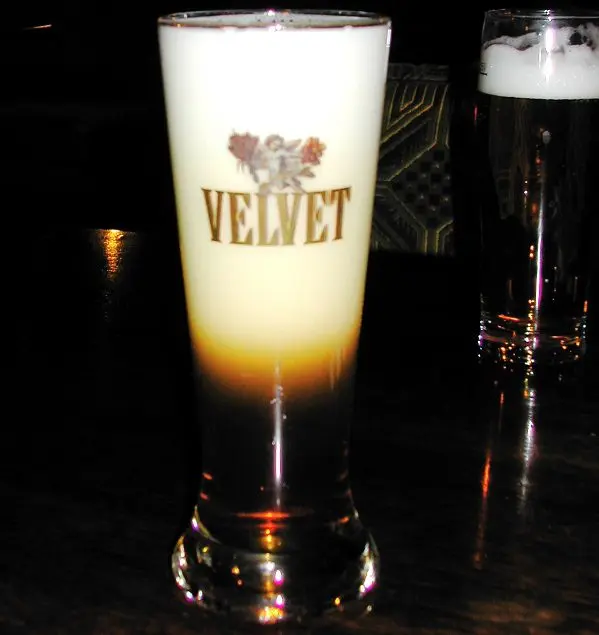It is called “a storm in a glass” and an “avalanche effect” drink. And for the first time they saw beer “boiling” in a glass, freeze in amazement. And greedily inhale the aroma of fresh rye bread.
Velvet is a Czech beer with a mild and unusually creamy taste, with a characteristic slight astringency of hops, which first appeared in 1997 and was the result of long-term but successful experiments by the masters of the Stary Istochnik Czech brewery, the creators of the world famous Staropramen trademark. They set out to create a beer that could overshadow the popularity of the Irish brand Guinness, beloved by many for its original aroma of roasted barley.
The experiment turned out to be successful – already in the year of release, Velvet was named “Exceptional Beer of 1997”, and the next year the drink became the owner of the title “Hit of 1998”. This is indeed an original drink that has no competitors in any of the countries, although according to the bottling technology invented by the British at one time, it can be compared with the Irish drinks Guinness and Kilkenny.
Production features
Three types of barley malt, each of which is processed in a special way, roasted barley grains and bitter varieties of hops – these ingredients make up the Velvet recipe.
An unusual effect during bottling is achieved using a mixture of nitrogen and carbon dioxide, which is why beer fans sometimes call it nitrogen.
The drink is poured into tall branded glasses of 0,4 liters (and not into half-liter mugs, as in most beer bars). And the cost of Velvet in the Czech Republic is approximately twice as high as the same Staropramen.
At first, beer was poured into all the usual containers for a drink – kegs, cans, bottles. But when they noticed that the drink in the bottle does not produce the desired effect, does not give such a level of foam, the bottles were withdrawn from production. In the Czech Republic, it is sold only for bottling, from kegs. Cans are also produced for export – 0,5 liters each.
Features of use
Unlike ordinary beers, Velvet foam does not form a “cap” over the glass, but rushes to the bottom and remains the same dense for about a minute and a half.
A test sip should be taken immediately, in the first 90 seconds, without waiting for the amount of foam to decrease. Organoleptic characteristics are most clearly revealed in the foam.
After the foam settles, the drink becomes outwardly similar to an ordinary sort of dark beer – a deep cognac color, but the creamy taste and light bitterness are still original.
The foam density of beer from a can is inferior to that of a beer poured from a keg, so connoisseurs prefer draft Velvet.
The “avalanche effect” in canned beer is achieved using a floating widget – a special technology: a nitrogen-filled plastic ball with a small hole is placed in a can. When opened, the nitrogen comes out and forms a “storm in a teacup”.
About the manufacturer
The trademark belongs to the North American company Molson Coors Brewing Compan, founded in 2005, which includes 11 wineries. The company’s case includes more than a hundred beer brands that are sold in 30 countries.
But the original Velvet beer is produced, as before, in the Czech Republic, at the Staropramen brewery, founded in 1869. As early as 1884, the plant’s products were well known in Austria, Germany, Switzerland and the United States. Today it is the second largest enterprise in the Czech Republic.
Characteristics of beer “Velvet”
Velvet (5,3%) is a cognac-colored beer with persistent fine-grained foam. The intense aroma is dominated by notes of rye toast, creamy caramel and hops. Velvety creamy taste with hints of malt and tart tones of hops. “Velvet” can be a standalone drink that does not require a snack. Beer bars offer dried squid, shrimp, salted nuts to it.










